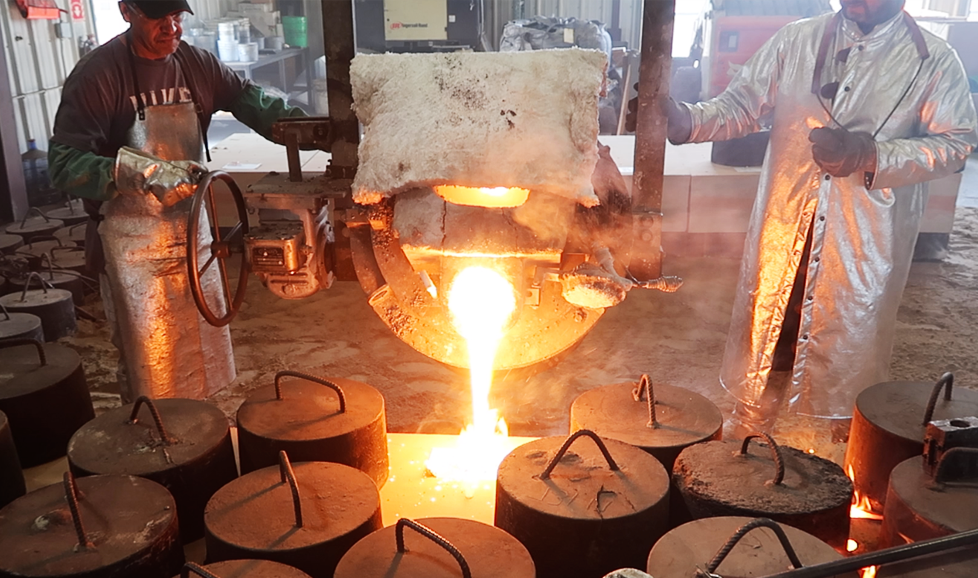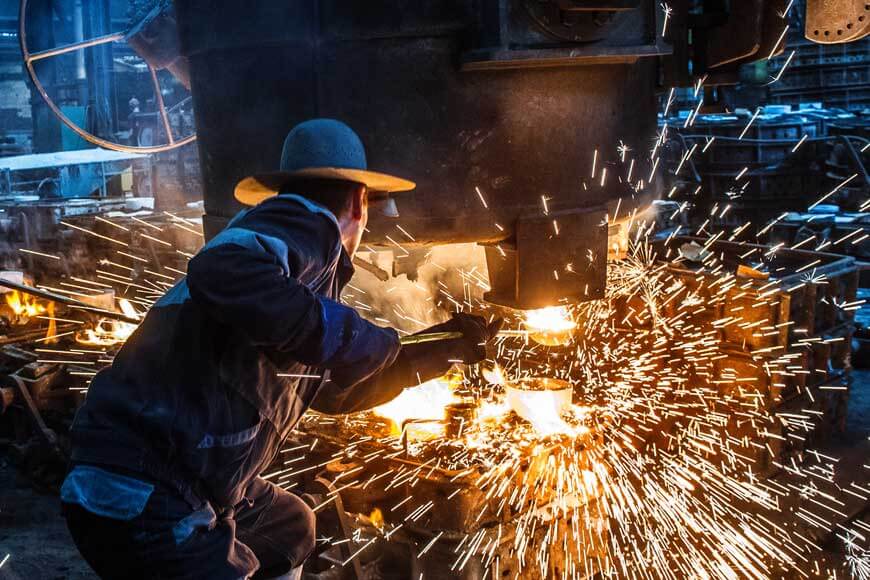Checking out the Art of Metal Casting: Strategies and Applications in Modern Foundries
Metal casting is a classic craft that combines creativity with engineering accuracy. From ancient strategies to modern advancements, this process has actually advanced substantially. Different approaches, such as sand casting and lost-wax casting, display the flexibility of the tool. Developments like 3D printing are improving how shops operate. As the lines between functionality and creativity blur, one must think about how these advancements impact both modern applications and typical techniques. What lies in advance in this evolving landscape?
The Basics of Metal Casting
Metal casting, an essential process in manufacturing, includes putting molten steel right into a mold to achieve a desired shape. This strategy offers as a foundation in the manufacturing of intricate steel components throughout different industries. Secret aspects of metal casting consist of the selection of materials, which can range from aluminum to steel, each selected for its certain properties and application suitability. The procedure starts with mold and mildew production, which can be made from sand, steel, or ceramics, depending on the casting technique used. The liquified steel is after that meticulously poured into the mold and mildew, where it solidifies and cools. Vital aspects such as temperature level control, cooling down rate, and mold design considerably impact the final item's high quality and features. Additionally, recognizing the chemical and physical residential or commercial properties of the metal help in maximizing casting efficiency, eventually boosting the effectiveness of the manufacturing process and making certain top notch output customized to details demands.
Standard Casting Methods
Conventional casting methods incorporate a range of methods that have stood the examination of time, showing their efficiency in producing complex steel components. One noticeable approach is sand casting, which utilizes a mix of sand and a bonding representative to develop mold and mildews. The adaptability of sand casting permits the manufacturing of varied shapes, making it appropriate for both small-scale and large manufacturing. An additional remarkable strategy is investment casting, commonly made use of for accurate and intricate geometries. This technique entails developing a wax pattern that is covered in a ceramic covering, which is then warmed to get rid of the wax, leaving a dental caries for liquified metal. In addition, die casting is utilized for high-volume production, where molten metal is injected right into recyclable metal molds. Each of these standard methods stays appropriate, showcasing the craftsmanship and ability integral in the art of metal casting, while meeting the needs of different industries.
Modern Innovations in Metal Casting
As sectors evolve, innovations in steel casting are improving manufacturing processes and enhancing performance. Advanced innovations such as 3D printing and computer-aided style (CAD) are changing mold and mildew development, allowing for elaborate styles that were previously unattainable. These methods promote rapid prototyping, minimizing lead times and fostering creativity in product advancement.
Furthermore, the integration of automation and robotics in shops is simplifying procedures, minimizing human mistake, and boosting safety. Smart sensing units and real-time monitoring systems enable specific control of temperature and material properties, making sure better outcomes.
Additionally, sustainable methods are arising, with using energy-efficient furnaces and recycled products, minimizing environmental effect. The adoption of composite materials and advanced alloys is likewise expanding the possibilities of metal casting, leading to more powerful and lighter elements. Overall, these modern-day innovations are transforming steel casting into an extra effective, precise, and ecologically accountable market.
Applications Throughout Various Industries

While diverse sectors significantly rely on metal casting, the strategy's adaptability plays a vital role in conference details application needs. In the vehicle market, metal casting is vital for generating engine parts, transmission real estates, and various other complex parts that need accuracy and durability. The aerospace sector gain from light-weight casted parts, making sure both performance and fuel efficiency. Additionally, the construction industry makes use of steel casting for structural aspects, such as beam of lights and supports, enhancing the honesty of bridges and buildings.
In addition, the power sector utilizes metal casting for wind turbine blades and other substantial machinery that have to withstand severe conditions. Clinical tools likewise see applications of metal casting, especially in medical instruments and prosthetics, where accuracy is critical - Aluminum Casting. In general, the convenience and integrity of steel casting make it crucial across various areas, contributing to the improvement of modern technology and infrastructure in contemporary society
The Artistic Side of Metal Casting
Although usually associated with commercial applications, steel casting also locates its area in the domain of art, where proficient craftsmens transform molten steel right into expressive sculptures and intricate layouts. This artistic side of metal casting includes varied methods, including sand casting, lost-wax casting, and investment casting, each offering one-of-a-kind possibilities for creative thinking. Musicians make use of these approaches to create jobs that vary from abstract forms to lifelike depictions, enabling personal expression and discourse on contemporary problems.

Often Asked Inquiries
What Safety And Security Steps Are Important in a Metal Casting Foundry?
Vital security procedures in a steel casting factory consist of personal protective tools, appropriate air flow, emergency methods, training in taking care of liquified metals, routine devices maintenance, and clear communication of risks to guarantee worker safety and health. Metal Foundry.
Just How Do Ecological Laws Influence Metal Casting Processes?
Ecological policies considerably affect metal casting processes by mandating the usage of cleaner modern technologies, lowering emissions, and promoting waste management techniques. Compliance commonly needs financial investments in equipment, training, and adjustments to existing treatments to reduce ecological influence.
What Are the Typical Problems in Metal Spreadings?
Usual flaws in metal spreadings include porosity, shrinkage, incorporations, and misruns. These problems can Metal Foundry occur from improper mold and mildew design, poor temperature control, or contamination, inevitably impacting the structural stability and overall high quality of the final item.
How Is Waste Managed During Metal Casting Production?
Waste administration in metal casting manufacturing includes recycling scrap metal, executing efficient product usage, and making use of sophisticated modern technologies to lessen waste. Foundries embrace practices like sand reclamation and proper disposal approaches to reduce environmental impact.
What Career Opportunities Exist in the Metal Casting Sector?
The steel casting sector supplies diverse job possibilities, consisting of duties such as shop supervisor, metallurgical designer, quality control assessor, pattern maker, and production manager, providing to different ability sets and knowledge in making processes.
Metal casting, an essential process in manufacturing, involves pouring molten metal right into a mold and mildew to attain a preferred shape. In addition, pass away casting is used for high-volume manufacturing, where liquified steel is injected into reusable metal molds. While varied markets increasingly depend on metal casting, the method's flexibility plays an important role in meeting certain application demands. Often associated with commercial applications, metal casting likewise locates its place in the domain name of art, where experienced artisans transform molten metal into expressive sculptures and intricate designs. Waste management in metal casting manufacturing entails reusing scrap metal, carrying out efficient material usage, and making use of advanced modern technologies to decrease waste.